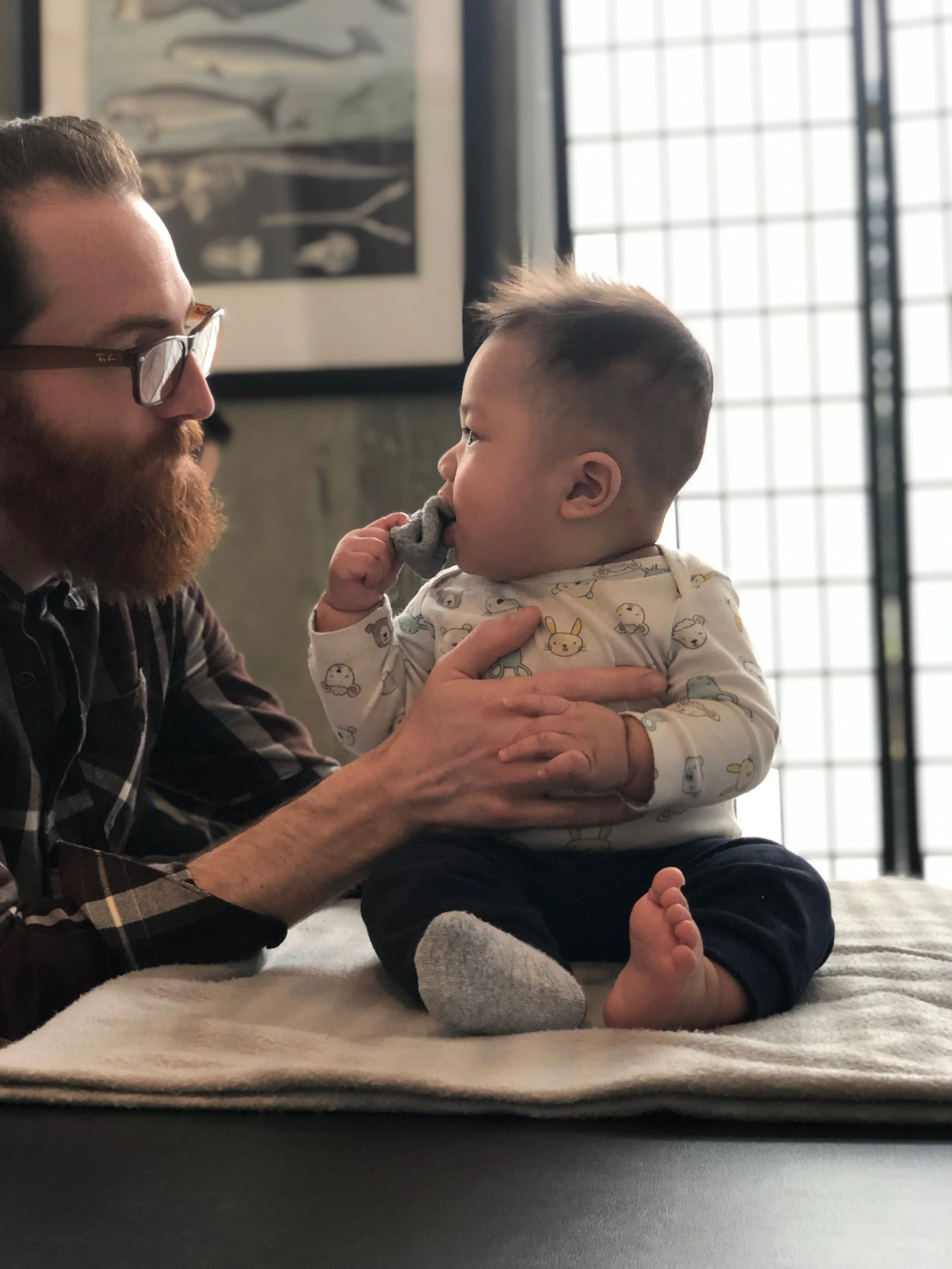Kids need chiropractic.
Now more than ever, supporting the developing nervous systems and bodies of kids is essential. From birth trauma to chemical exposure, sports injuries and bike accidents to information overload, sibling and school stress to hormonal changes, kids these days are navigating a different and oftentimes more stressful set of environments than previous generations. Chiropractic, focused on clearing the interference in the nervous system, brings ease to the body and balance to other organs and systems. It’s not always about pain. Whether it’s latch, colic, gut, immune, sensory, attention, or social, the first thing that must be online when addressing these issues is balance in the autonomic nervous system. This is the primary focus of chiropractic. This is why we measure nervous system function with our Insight technology. This is how we can have and hold a conversation about how function informs how we feel.
What about other modalities?
Acupuncture, speech, PT, OT, primitive reflex integration, and even medical intervention can all provide support to kids. In my experience, the timing and the order in which modalities are introduced is what makes the difference between major benefit and okay results. The first system in the body to come online is the nervous system. It weaves through all tissues and organs. Normal function in the nervous system is the foundation for the health of the body. It literally sets the tone for how the other systems will respond to environmental demands and be able to adapt to stress. By addressing this first with chiropractic, the when and where of bringing in other modalities gets much more clear, and the body becomes more receptive to those other kinds of inputs.
Why a Care Plan?
Nerve interference alters the amount and timing of signal between the brain and body. In chiropractic, this interference is known as subluxation. Chiropractors address this interference with adjustments (plural). Adjustments over time, tailored to the case with technique, frequency, and projected duration is what we call a Care Plan. It is neurologically and clinically more helpful to adjust fewer areas over time than adjusting as many areas as possible in one visit.
The benefits of care are cumulative and consistency is key. Everything that is a process takes time. How much depends on many factors, which is why deep dive on health history and use modern technology to measure nervous system efficiency, adaptability, and resilience, along with our clinical assessments. Every kid is different, but the patterns of interference are recognizable if you know how to look.
Care Plans orient around reassessments. Like telemetry, we want to update our current coordinates, compare with where we started, and make sure we are heading in the direction of reorganization of vital energy and restoration of health. This is what neurologically-focused pediatric chiropractic looks like in our office, and a case for why kids need chiropractic, now more than ever.
If you or someone you know could benefit from learning more about how chiropractic could help their kid, please have them reach out to the office. Thank you!
What is neurotonal chiropractic?
We now live in a “Neuro Age,” that is, a time in which doctors, healthcare providers, and the public are starting to recognize and appreciate what chiropractors have been saying and studying for more than a century: the foundation of health is the tone of the nervous system.
A neurotonal approach starts with taking an in depth health history, listening and looking for where the signs and symptoms reported relate to systems of the body. Chiropractors focus on where stress and tension in the neuroskeleton is negatively affecting nerve signal to the other systems in the body. Neurotonal chiropractic leverages leading edge technology to measure autonomic nervous system function. Instruments to objectively assess where and how much physiological stress is present in the nervous system, include spinal thermography, surface electromyography, and heart rate variability.
The history, the scans, and the clinical chiropractic assessment on the first visit inform what recommendations for a care plan the chiropractor offers. We set an initial plan based on a certain number of visits over a focused period of time, and will have check points along the way (re-evaluations) track symptom progress, scan changes, and functional assessments.
Neurotonal chiropractic is not a technique. It reflects a blending of adjusting tools and techniques based on who and how the someone enters care. Scans and clinical interpretation help determine which kinds of chiropractic adjustments will promote more change more quickly, and this can change over time. Network Spinal is the foundation for how we offer neurotonal care at Mutter Chiropractic. In addition, we integrate cranial work and extremity adjusting, as well as instrument and manual adjustments when indicated.
Rocking to Rolling
Rolling to rocking, kicking to crawling unfolds in the order it does to keep time with the stages of development. As the perceptual field of the infant expands, the innate desire to explore the world drives the movements to do so. The way these movements express - their symmetry, their sequence, their coordination - reflects the way the central nervous system is able to adapt to the environment. Supporting this coordination between the brain and body is the primary aim of chiropractic care.
The cross-crawl pattern of hands and knees alternating in sync is the foundation for walking. This pattern weaves the circuitry between both sides of the brain, which is essential for walking, but also the capacity to dialogue. That is, to converse with, investigate, be curious about, and begin to shape the world we inhabit.
For more information about how and why I study, train, and recommend chiropractic for kids, click here.


